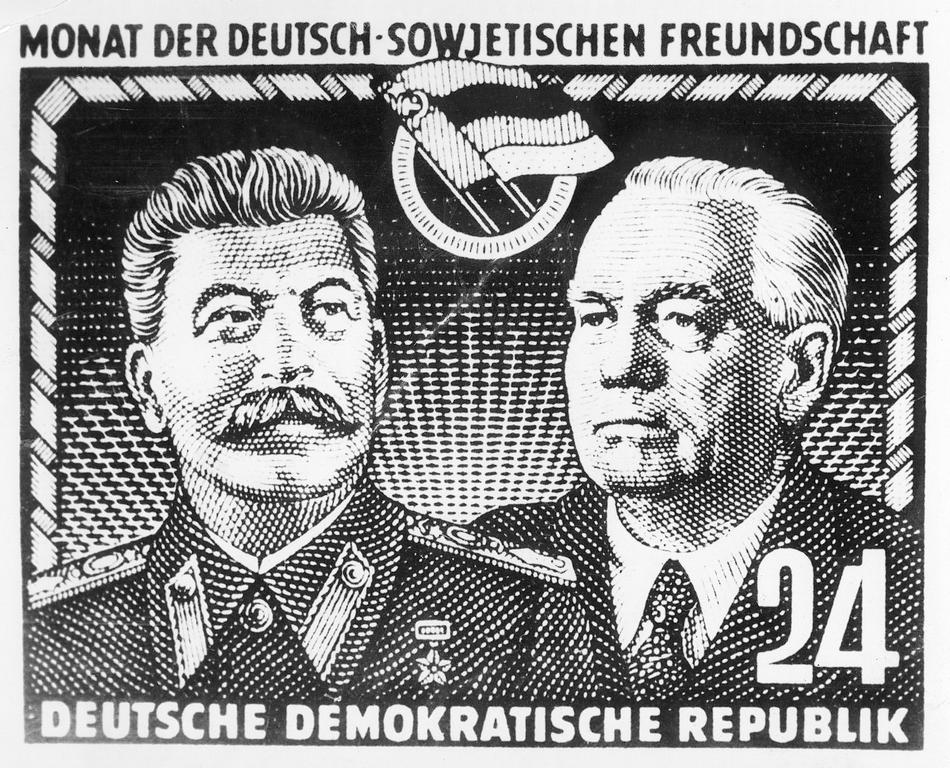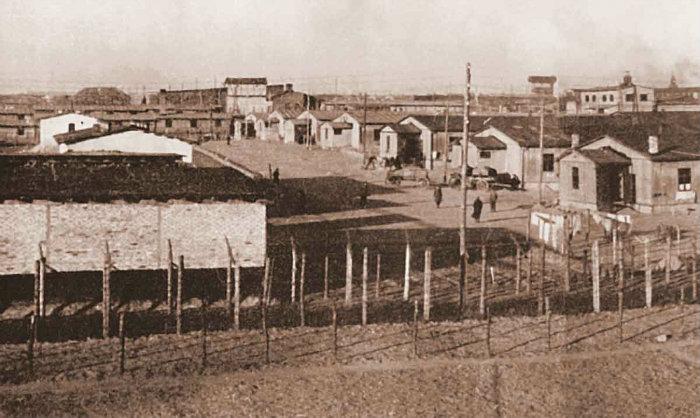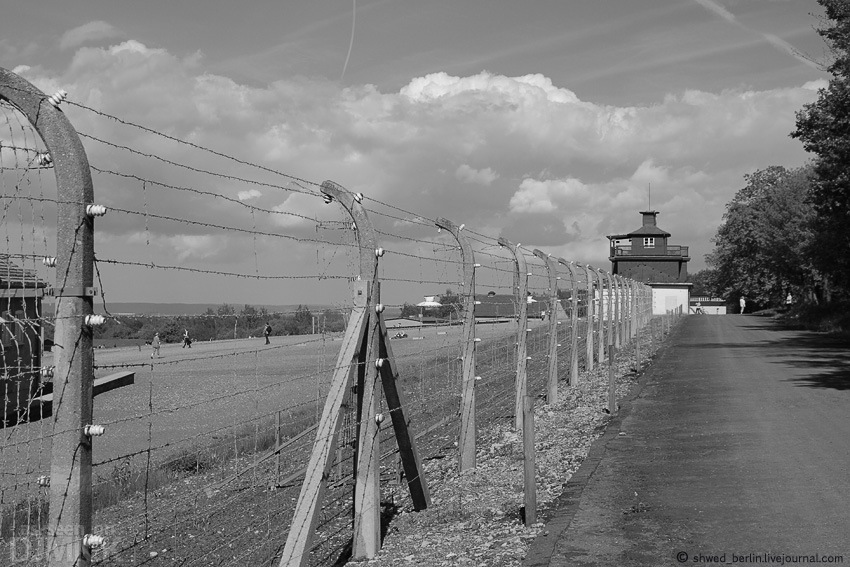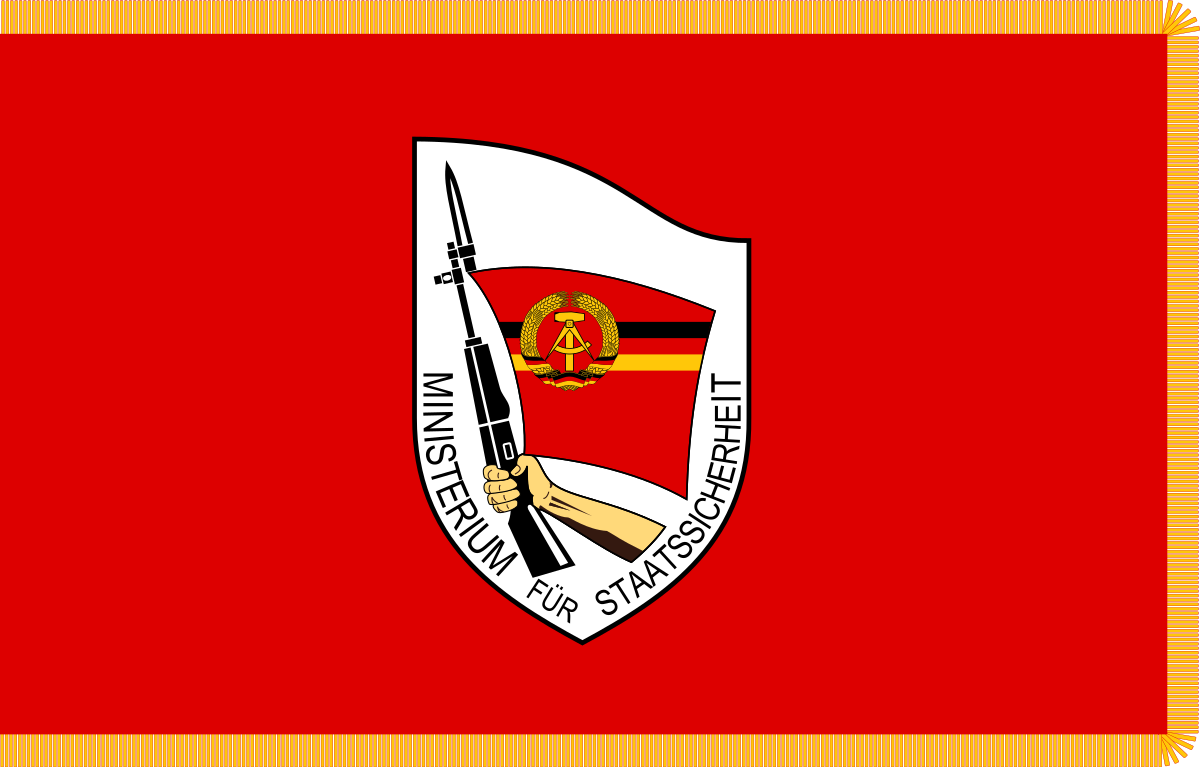Political prisoners in the German Democratic Republic
The author of the article works as a research assistant at the Stasi Records Agency in Germany.
Following the end of the Nazis’ war of aggression, the Soviet occupiers took power in East Germany. They had close ties with the Communist Party of Germany (KPD) as well as the Socialist Unity Party of Germany (SED) that emerged later. In order to cement their authority, the new rulers utilised a compliant justice system to sentence between 180,000 and 250,000 people to a term of imprisonment on political grounds alone until 1989.

This affected democratically-minded opponents of the new government – such as supporters of West German political parties in the 1950s. Later, people were sentenced for trying to flee across the heavily guarded Inner German border or trying to exercise their human rights.
Others were targeted by the justice system through no fault of their own – for example because they somehow stood in the government’s path when the latter sought to restructure the country societally and expropriated both big landowners and hoteliers. It is disputed to this day whether former Nazi criminals were also classified as political prisoners: they were prosecuted contrary to the rule of law, but had committed severe crimes pre-1945.
Following the end of the war, opponents of the new government were first put into local prisons and camps that predominantly reported to Soviet organisations. These cells served as detention centres and were often located in the basements of branches of the Soviet secret police. Additionally, there were so-called special camps which were usually located on the sites of former Nazi concentration camps.

Until 1950, around 154,000 people – 123,000 of them Germans, 35,000 citizens from all over the Soviet Union and occupied states in Eastern Europe – were accused of being collaborators of the old regimes. While they were supposed to be deported to the Soviet Union for forced labour, many people would never get there because of malnutrition and mistreatment. 43,000 prisoners died of hunger, disease and exhaustion.
Many inmates were imprisoned preventively and without any valid evidence. As a matter of fact, the new rulers focused on defending threats to their power rather than prosecuting Nazi crimes. Lower-level officials of the NSDAP as well as teenagers and young adults were imprisoned because they had supposedly prepared acts of resistance and sabotage against the occupiers. Others were suspected of spying; in some cases, contacts with Western radio stations meant the death penalty.
Additionally, there were so-called special camps which were usually located on the sites of former Nazi concentration camps.
By 1955 Soviet courts, the so-called military tribunals had passed 35,000 sentences against Germans. Among those were also 3,500 death sentences that were primarily administered on Soviet soil. The flagrant arbitrariness of many verdicts served as a deterrent and stabilising influence for the new Soviet rulers.

At the beginning of 1950 the remaining special camps were liquidated and their 14,000 inmates were released, although almost as many were transferred to the authority of the East German Ministry of the Interior. 3,400 prisoners who had still been waiting for their sentence were subsequently dealt with by German special courts that followed Soviet instructions in what became known as the Waldheim Trials.
The accused had no right to legal representation and proper criminal evidence was extremely rare. Nonetheless, countless prison sentences and 33 death sentences were imposed in extraordinarily swift proceedings.
East German courts, too, started prosecuting Nazi crimes on the basis of the SMAD Directive 201 in 1947, passing around 8,300 verdicts. If the body of evidence was particularly impressive, court proceedings would be conducted publicly, because the authorities deemed them a useful tool to propagate their anti-fascist ideology. Many political proceedings, however, occurred behind closed doors or with a select audience on grounds of secrecy.
Even officials of the new SED regime were occasionally imprisoned because they would become targets of conspiracies or had fallen out of favour. Fervent communist Fritz Sperling, for example, was imprisoned for seven years based on a law that had not even existed around the time that he had supposedly committed the “crimes” of which he now stood accused. Show trials were used to maintain the obedience of party members and ordinary citizens alike.
From 1950 onwards, political opponents of the SED regime as well as spies were tried under Article 6 of the constitution of the GDR. Furthermore, 6,000 Jehovah’s Witnesses were sentenced by 1987 on ever-changing legal grounds. Within the context of de-Stalinisation, Article 6 was replaced by the Criminal Law Amendment Act of 1957 which would govern the terms of imprisonment for enemies of the state.
In the 1950s, several hundreds of people were abducted from West Berlin to be prosecuted in the GDR. This affected western agents as well as journalists critical of the GDR (such as Karl Wilhelm Fricke) and other groups. This abduction policy negatively affected the GDR’s international standing during the Cold War and was soon dropped as a result.

Following the closure of the borders between Berlin’s different sectors on 13th August 1961, the criminal justice system of the GDR turned particularly harsh. It was no longer possible for citizens to escape government repressions by fleeing the country. By the end of the year, almost 30% of all prison inmates in the GDR stood accused of crimes against the state and thus would be counted as political prisoners.
In relation to the GDR’s overall population of 17m people, the Stasi was the biggest secret police in the world.
The country’s new penal code of 1968 introduced harsher sentences for political offences. In 1971 the number of arrests and prisoners spiked following Erich Honecker’s ascent to power. Regardless of an amnesty granted in the following year, more than 48,000 people would be simultaneously imprisoned again in 1973, reaching the old heights last witnessed back in 1956.
In the 1970s and 1980s, between 3,000 and 5,000 people were sentenced according to the political paragraphs of the GDR penal code every year. Most of them were caught trying to escape across the Inner German border. Others were imprisoned simply for not abiding with the strict societal norms or because they were deemed asocial.
Right after the war Soviet institutions were directly responsible for political persecution, later the East German secret police called “Stasi” (“Staatssicherheit” - state security) dealt with such matters. While the latter initially focused on spies and subversive elements, over time it would increasingly concern itself with other political crimes as well as desertion from the republic (“Republikflucht”).
In its last years, it maintained a network of 180,000 unofficial and 91,000 official employees to keep all of society under surveillance. In relation to the GDR’s overall population of 17m people, the Stasi was the biggest secret police in the world.

Meanwhile, the criminal police (“Kriminalpolizei”) focused on investigating lesser political offences. Just like the Stasi, the People’s Police also had its own detention centres. Following the imposition of a custodial sentence, almost all prisoners would be handed over to the Ministry of the Interior of the GDR which then decided on how they would serve their terms. In 1953, the ministry oversaw more than 250 remand prisons, penal institutions, labour camps and prison hospitals.
Following the process of rationalisation, around 80 institutions were left in 1989. Five of those prisons were reserved for the under aged, while the prison hospital Leipzig-Klein Meusdorf would accept sick or injured inmates. The Stasi ministry, too, had its own prison hospital (in Berlin-Höhenschönhausen), but primarily relied on its remand prisons of which there were one in each district and two in East Berlin (as of 1989). Delinquent and disciplined members of the military were kept in a separate prison (in Schwedt) which was put under direct oversight from the Ministry of National Defence in 1982.
Because of the strict sentences for political offences as well as more traditional crimes, East German prisons were usually overcrowded. From time to time, amnesties would be granted to avoid the total collapse of the prison system.
Furthermore, the western Federal Republic of Germany started paying for the freedom and transfer of political prisoners in 1963, spending a total of 3.4 billion Deutschmarks throughout the years. Between the construction and demolition of the border wall, one third of all political prisoners in the GDR, around 33,000 people, benefited from this arrangement.
The prisoners that could not be saved were entirely at the mercy of their overseers. The prosecutor’s office that was supposed to oversee the penitentiary system rarely fulfilled its duties. Similarly, parliamentary committees dealing with the oversight of the penitentiary system in Thuringia and Saxony were dissolved as part of the process of de-Stalinisation in 1952.
Political prisoners were usually treated more harshly than their fellow inmates convicted of traditional crimes. As part of their sentences, inmates were always put to work; some had to wind up electric motors or, as was the case at lignite mines, had to lay new railway tracks even in sub-zero weather. Beyond that, many of the consumer goods co-produced by inmates were sold to the West for hard currency – including to the furniture group IKEA.
One thing that set the GDR’s penal system apart from those in other socialist brother nations was the fact that it was a lot more difficult to hide its machinations from the free world. Countless released and ransomed prisoners, refugees, and even former watchmen who had deserted their country were happy to share their first-hand experiences. This provided invaluable information about prison conditions and the political persecution inside the GDR which relief organisations such as Amnesty International could share with the global public.
Bibliography:
Beleites, Johannes: Abteilung XIV: Haftvollzug. Berlin 2004
Engelmann, Roger; Joestel, Frank: Hauptabteilung IX: Untersuchung. Berlin 2016
Finn, Gerhard; Fricke, Karl Wilhelm: Politischer Strafvollzug in der DDR. Köln 1981
Hilger, Andreas; Schmidt, Ute; Wagenlehner, Günther (Hg.), Sowjetische Militärtribunale. Band 1: Die Verurteilung deutscher Kriegsgefangener 1941-1953, Köln 2001
Mironenko, Sergej; Niethammer, Lutz; von Plato, Alexander (Hg.): Sowjetische Speziallager in Deutschland. Band 1 - Studien und Berichte, Berlin 1998
Passens, Katrin: MfS-Untersuchungshaft. Funktionen und Entwicklung von 1971 bis 1989. Berlin 2012
Raschka, Johannes: Justizpolitik im SED-Staat. Anpassung und Wandel des Strafrechts während der Amtszeit Honeckers, Köln 2000
Sonntag, Marcus: Die Arbeitslager in der DDR. Essen 2011
„Die Vergangenheit läßt uns nicht los ...“. Haftbedingungen politischer Gefangener in der SBZ/DDR und deren gesundheitliche Folgen. Berlin 1997
Werkentin, Falco: Politische Strafjustiz in der Ära Ulbricht. Berlin 1995
Wölbern, Jan Philipp: Der Häftlingsfreikauf aus der DDR 1962/63-1989. Zwischen Menschenhandel und humanitären Aktionen. Göttingen 2014
Wunschik, Tobias: Knastware für den Klassenfeind. Häftlingsarbeit in der DDR, der Ost-West-Handel und die Staatssicherheit (1970-1989). Göttingen 2014